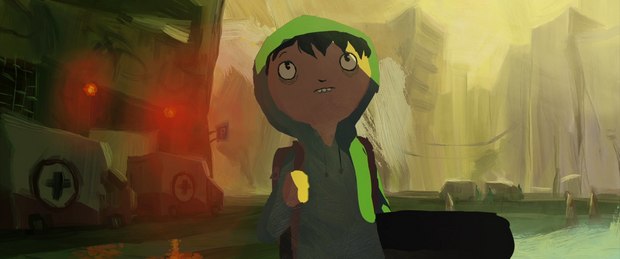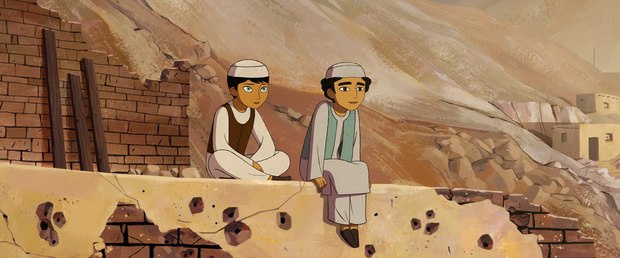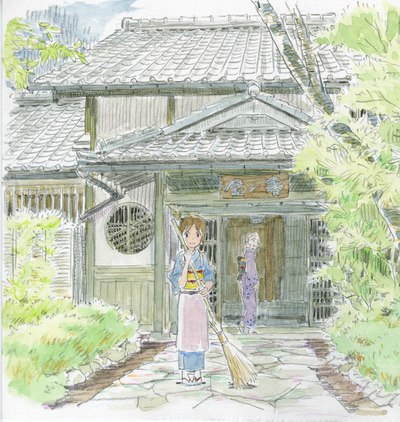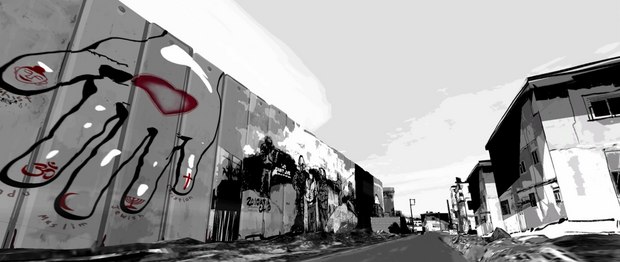From Belle Époque Paris to biblical Egypt, the films in this year’s feature competition offer a bracing diversity of styles, themes and cultures.
One thing you can say about Annecy this year: There’s no shortage of courageous children on view. Multiple films in the feature competition focus on adolescent kids finding their way in the world, or coming to the aid of their parents.
The 2018 edition of the festival opens with Michel Ocelot’s Dilili à Paris. Set in Belle Epoque Paris at the cusp of the twentieth century, the film follows Dilili, a young, dark-skinned Kanak girl from the southwest Pacific islands, as she tries to unravel the mystery behind kidnappings of young girls.
The film is rich in beautifully rendered period detail, but its story of women victimized by men (“the main evil of the planet,” according to Ocelot) gives the film a contemporary resonance. The director describes Delili as “something like a fairy tale, except the ‘fairies’ are historical people who have left us a rich and open civilization.”
A resolute girl is also the hero of The Breadwinner, Ireland’s Cartoon Saloon’s third Oscar-nominated feature after The Secret of Kells (2009) and Song of the Sea (2014). In regressive Afghanistan, where women aren’t allowed to leave home unescorted by a man, 11-year-old Parvana disguises herself as a boy to help support her family and search for her arrested father.
Angelina Jolie, who is familiar with the plight of young Afghan girls from her charity work, joined the film as an executive producer. “She had a deep understanding of the problem,” says director Nora Twomey. “She articulated subtleties of character and culture I was able to sew into the tapestry of the film.” The Breadwinner was financed in part by GKIDS, the film’s U.S. distributor.
Like Parvana, the male protagonist of Brazil’s Tito and the Birds is a child in search of a missing father, but with an extra challenge: trying to stop the “fear pandemic” sweeping the country and transforming people into misshapen monsters. The key to a cure may lie in his scientist father’s research into cooing pigeons.
Tito won critical financing in a competition held by Brazil’s National Bank of Development to help fund animated features. Its impressionistic design underscores its horror film premise -- and kept its budget under control. According to co-director and screenwriter Gustavo Steinberg, “It’s no use getting the perfect style if I cannot produce it, so we developed the look and concepts to make it happen.”
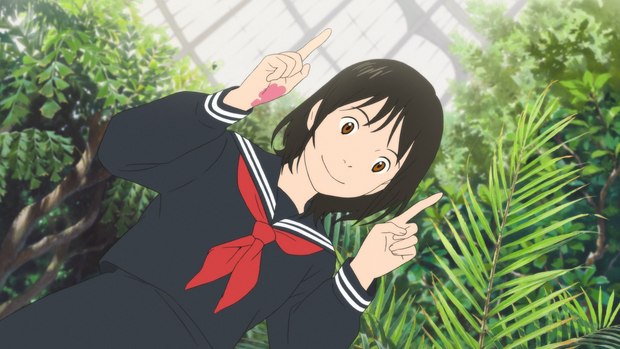
Director Mamoru Hosada’s ‘Mirai’ features Kun, a sensitive four-year-old who runs away when his baby sister joins the family.
Director Mamoru Hosada’s previous films The Girl Who Leapt Through Time (2006) and The Boy and the Beast (2015) featured youngsters as protagonists. Mirai’s hero Kun is not quite yet a youngster, but rather a sensitive four-year-old who runs away when his baby sister Mirai joins the family. His flight leads him to a magic garden, where he encounters his mother as a little girl, his great-grandfather as a young man, magical beings -- and his now grown sister. The adventures help him accept his sister as one of the family. Like The Breadwinner, Mirai is being distributed in the U.S. by GKIDS.
The French-language film Funan might be considered the “flip side” of The Breadwinner: instead of an adolescent girl searching for her father, Funan follows a young Cambodian mother separated from her four-year-old son in the midst of the Khmer Rouge’s genocidal rampage. The film’s strong visual style employs solid swaths of color, facial features rendered in thick black strokes, and sophisticated shadowing. Funan is a semi-autobiographical, first directing effort by 32-year-old Dennis Do, whose goal was to “explore complex relationships in a context of extreme oppression.”

‘Funan’ follows a young Cambodian mother separated from her four-year-old son in the midst of the Khmer Rouge’s genocidal rampage.
A graphic novel by Columbian-Ecuadorian cartoonist Paola “Powerpaola” Gaviria is the basis of the autobiographical Virus Tropical, a first feature from Colombian filmmaker Santiago Caicedol. Its title comes from the imaginary malady diagnosed by doctors who refuse to believe a tube-tied woman is pregnant.
The film’s finely drawn, black-and-white style was provided by Gaviria, who created some 5,000 original drawings for the production. A bravura sequence early in Tropical follows a sperm cell on its way to fertilizing the egg that will eventually become the film’s protagonist, also named Paola. The trials of childhood, adolescence and teenage rebellion follow, as Paola copes with moody sisters, a fortune-telling mother and a defrocked priest father as she makes her way to adulthood.
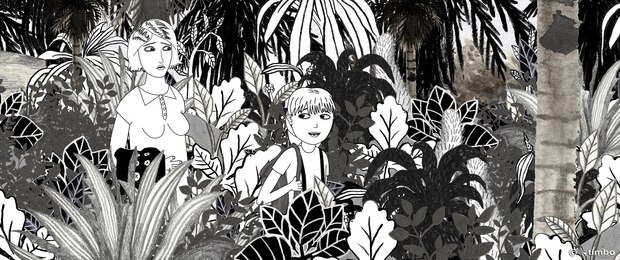
The first feature from Colombian filmmaker Santiago Caicedol, ‘Virus Tropical’ is based on a graphic novel by Columbian-Ecuadorian cartoonist Paola “Powerpaola” Gaviria.
Also in competition is Seder-Masochism, Nina Paley’s first feature since Sita Sings the Blues (2008). Her deconstruction of the Book of Exodus and the defeat of “the Goddess, humankind’s original deity” by the forces of patriarchy echoes Sita’s feminist retelling of the cruel treatment of a prince’s wife in the Indian epic Ramayana.
Twenty-five hundred years after the events explored in Paley’s biblical epic, a different perspective on the Holy Land is offered by Cam Christiansen’s animated documentary WALL. Scripted by Oscar-nominated screenwriter and playwright David Hare, who also appears on-camera, Christiansen’s film charts the impact of the 440-mile barrier Israel has built to protect itself from (and isolate) adjacent Palestinian lands.
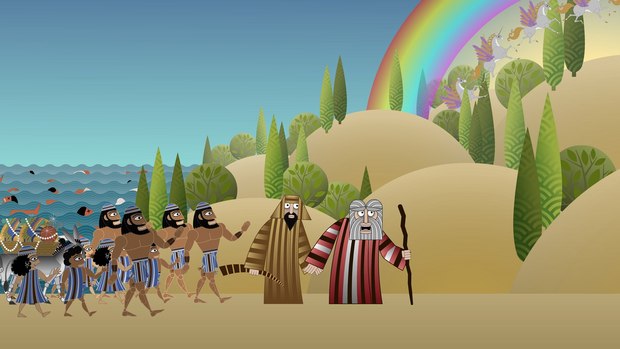
‘Seder-Masochism,’ Nina Paley’s first feature since ‘Sita Sings the Blues’ deconstructs the Book of Exodus and the forces of patriarchy.
Using a muted palette, together with a dreamlike and occasionally unsettling combination of 2D, CGI and motion capture techniques, the National Film Board of Canada production incorporates the experiences of people living on both sides of the controversial structure. Producer Bonnie Thompson predicts that WALL will have a more emotional impact on its viewers than a conventional documentary. “Documentaries often make you feel like you’re going to learn something,” she says. “But animation is a little bit seductive: you’re pulled into a story.”
While it sounds like it might be a feline version of the classic fairy tale, Gatta Cenerentola (“Cinderella the Cat”) is actually a stylish crime thriller set in a dystopic future Naples. In this grown-up retelling of the glass-slipper saga, a pistol-packing Cinderella faces down her evil stepmother and not merely two, but six, equally villainous stepsisters.
La Casa Lobo, or The Wolf House, is easily the most challenging feature film in the competition. As much an art piece as a narrative work (production took place in art galleries and at public exhibitions in six countries), the stop-motion Lobo is reminiscent of the work of the Brothers Quay or Jan Švankmajer. Directors Cristobal Leon and Joaquin Cocina took their inspiration from the history of a reclusive Jim Jones-style Chilean cult, imagining the kind of movie the cult leader might have made to keep his followers in thrall. (“What if he had been a sort of Walt Disney, what story would he have told?”) Assuming his perspective, they weave a tale of a young woman who flees the cult, only to find herself trapped in a nightmarish house.
Unfortunately, not much can be said about the final feature in the competition, Okko’s Inn. At the time of writing, the film was still in production and information about it was hard to come by. Its director Kitaro Kosaka is a longtime Ghibli veteran, working with the legendary Hayao Miyazaki on Nausicaä (1984), Castle in the Sky (1986), Spirited Away (2001), Howl’s Moving Castle (2004) and Ponyo (2008); with credentials of that order, one can reasonably hope for a film with more than a touch of Ghibli magic to it.
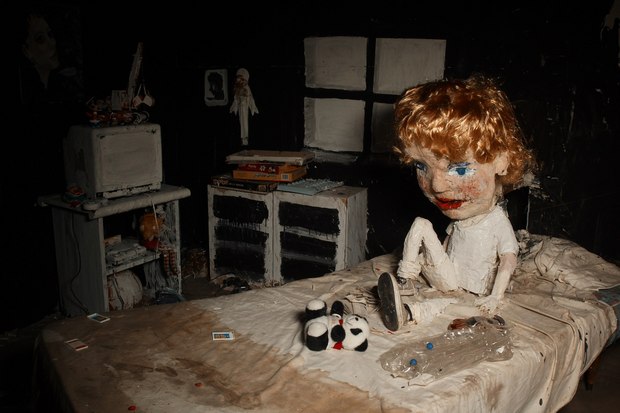
The stop-motion animated ‘La Casa Lobo’ (‘The Wolf House’) is reminiscent of the work of the Brothers Quay or Jan Švankmajer.
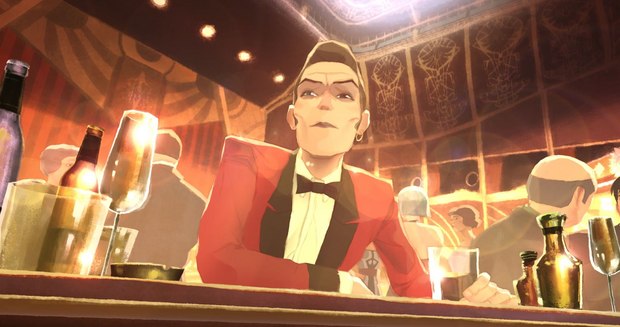
‘Gatta Cenerentola’ (‘Cinderella the Cat’) is a stylish crime thriller set in a dystopic future Naples.
This article originally appeared in the Special Annecy 2018 Edition of ANIMATIONWorld Magazine.
